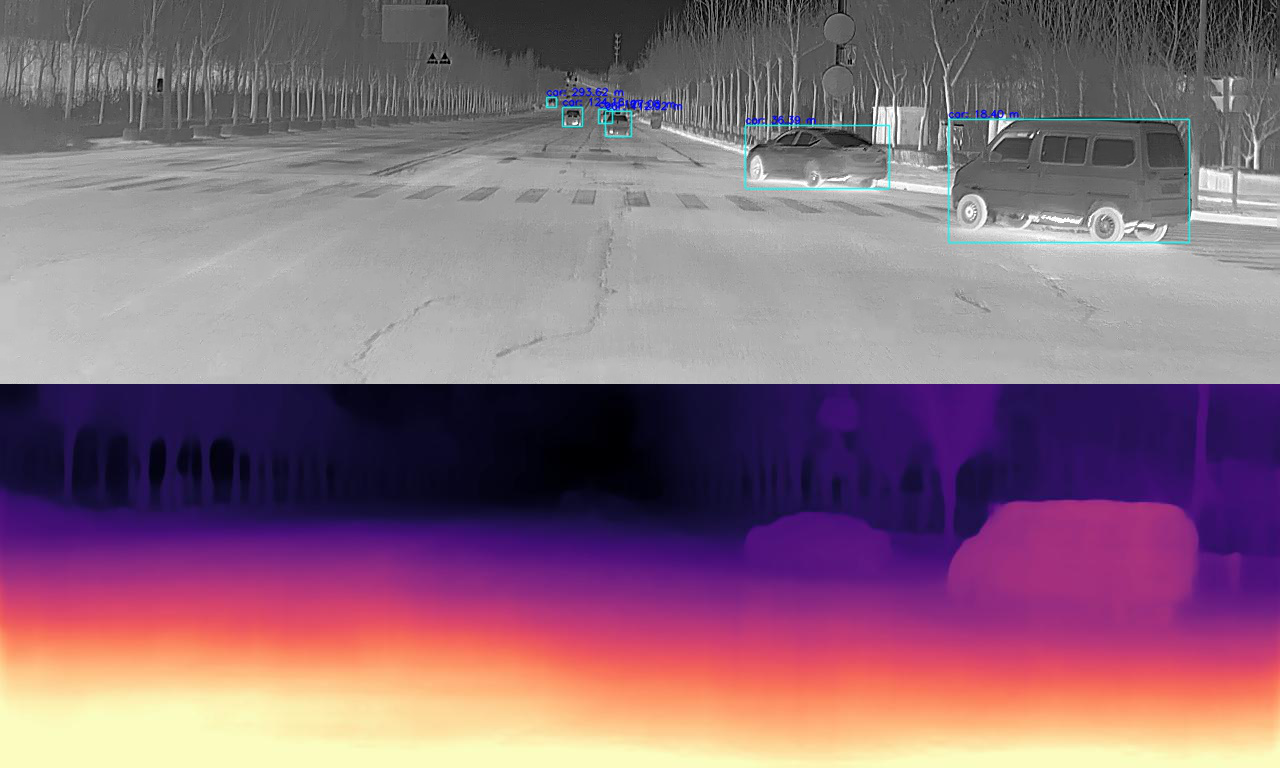Infrared monocular ranging database
Welcome to use the Infrared monocular ranging database in Raytron database
Time:2021-12-10 Font A- A A+
With the continuous exploration of academia and industry in the field of artificial intelligence, the computer vision application dominated by deep learning and based on deep convolution neural network has made remarkable achievements in the past ten years. According to incomplete statistics, more than 10 million people are injured or killed in traffic accidents all over the world every year. The main causes of traffic accidents include drivers' inattention or fatigue driving, pedestrians crossing the road during vehicle driving, etc. Therefore, the research of advanced assisted driving system is particularly important as the core task of automatic driving. It collects environmental data inside and outside the vehicle by using various on-board sensors, and senses the surrounding environment of the vehicle by using computer vision technology, which mainly includes real-time monitoring of vehicles and pedestrians on the road and knowing the distance from the target to the vehicle at any time, So as to timely remind drivers of possible potential dangers and give early warning, so as to prevent traffic accidents. Therefore, real-time ranging of vehicles and pedestrians is the key technology of vehicle safety assisted driving research. Vehicle pedestrian ranging first needs to determine the position of the target in the image, then map from the two-dimensional image to the three-dimensional world, and finally obtain the distance between the vehicle pedestrian and the current vehicle. Visual ranging algorithms mainly include binocular stereo vision and monocular vision. Binocular stereo vision obtains depth of field information through feature point matching, which takes a lot of time, is difficult to meet the real-time requirements, and the camera installation process is complex and the price is relatively expensive. Monocular vision has the characteristics of low price, simple model structure, no data fusion, and can meet the requirements of real-time.

To solve this problem, we have created a new vehicle monocular ranging database. Through the normal driving of vehicles equipped with professional cameras, the database takes video shots of human and vehicle targets at different time points in a variety of different scenes, obtains a large number of video images from the driver's perspective, and segments the video into several images, The height of the camera when shooting is roughly the same as that of the general driver's field of vision. Most of the collected data are real road conditions, including all kinds of pedestrians on general roads, vehicles of different sizes and shapes, all kinds of road traffic facilities, and shooting on roads with different road conditions, including sparsely populated wide roads, It also includes congested intersections, etc. Many visible videos are converted into infrared videos, and these videos are segmented into pictures with different pixels. The database mainly uses them for the research of real-world monocular ranging, so that monocular ranging technology can be further developed, so as to promote the application and development of monocular vision technology in various industries.

The purpose of our research is to establish a monocular ranging database in real driving scene and verify the practical application effect of monocular ranging algorithm in real scene. The database records include a number of intersections or roads, communities, pedestrians on the road, vehicles of different shapes, sizes and speeds in different scenes and different periods. A total of 65097 infrared images are contained in the database. The picture pixels included are 640 * 320, and the camera parameters used for shooting are [3. 44741222e 03 0. 000000 e 00 6. 37818047e 02 0. 000000 e 00 3. 49584207e 03 1. 85718328e 01 0. 000000 e 00 0. 000000e 00 1. 000000e 00].
The researchers
The study was conducted by:
Jiansheng Wang ( jiansheng.wang@raysense.com )
Shuigen Wang ( shuigen.wang@raysense.com )
Copyright Notice
-----------COPYRIGHT NOTICE STARTS WITH THIS LINE------------
Copyright (C) 2021 Yantai Raytron Technology Co., Ltd. All Rights Reserved.
All rights reserved.
Permission is hereby granted, without written agreement and without license or royalty fees, to use, copy, modify, and distribute this database (the images, the results and the source files) and its documentation for any purpose, provided that the copyright notice in its entirety appear in all copies of this database, and the original source of this database, Yantai Raytron Technology Co., Ltd (Raytron, https://www.raytrontek.com/ ), is acknowledged in any publication that reports research using this database. In no event shall Yantai Raytron Technology Co., Ltd be liable to any party for direct, indirect, special, incidental or consequential damages arising out of the use of this database and its documentation,even if Yantai Raytron Technology Co., Ltd has been advised of the possibility of such damage.
Yantai Raytron Technology Co., Ltd disclaims any warranties, including, but not limited to, the implied warranties of merchantability and fitness for a particular purpose. The database provided hereunder is on an "as is" basis, and Yantai Raytron Technology Co., Ltd has no obligation to provide maintenance, support, updates, enhancements, or modifications.
-----------COPYRIGHT NOTICE ENDS WITH THIS LINE------------
Download
We are making the Infrared monocular ranging database of infrared images available to the public for free. If you use this database in your research, We would appreciate your appreciation for the research done by our company:
Yantai Raytron Technology Co., Ltd.
You can fill in the above form to submit the application form for using this database to us. After the approval, the download address of this database will be sent to your email.
If you encounter any problems in downloading, viewing or using this database, please contact the maintenance staff of this website:Chunlei Guan( chunlei.guan@raysense.com )
Return to raytrontek Infrared Open Source Platform page
